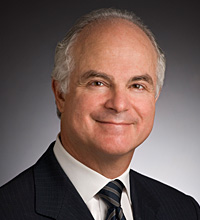The Job of a Journal Editor
(Author: Pramodita Sharma)
Research Applied précis prepared by Ivan Lansberg, Kellogg School of Management and Lansberg Gersick & Associates LLC
The family business field as we know it today has been blessed with a cadre of dedicated scholars and practitioners who have, over the years, devoted themselves to solidifying the institutional infrastructure from which we all benefit. They are the foot soldiers that selflessly toil day after day so that the knowledge building and dissemination enterprise so critical to us all can flourish. Few soldiers devoted to this noble endeavor deserve more recognition than our dear friend and colleague Pramodita Sharma, the current editor of the Family Business Review (FBR). After eight stellar years in the leadership of FBR, Pramodita is currently engaged in preparing for her succession and, in so doing, honoring the essential best practice that we all preach. With the thoughtfulness and commitment to excellence we’ve all come to expect from her, she has written an excellent editorial summarizing the work of an editor that will no doubt greatly facilitate the very challenging search for a successor that, hopefully, will be as effective as she has been.
In essence, Dita borrows from Henry Mintzberg’s classic framework for describing what managers do and applies it to the multifaceted job of the editor of the lead journal in a field that is still coalescing. Mintzberg breaks down a manager’s job into ten fundamental roles — the first three derive from the exercise of formal authority (figure-head, leader and liaison); the next three relate to the function managers play disseminating information throughout the organizational networks in which they participate (monitor, disseminator and spokesperson); and the remaining four roles relate to the editor’s decision-making function (entrepreneur, disturbance handler, resource allocator and negotiator). Pramodita’s objective in this editorial is to organize the actual on-the-job behavior of the editor into discrete buckets of activity that provide a full description of what the job actually entails.
For example, on describing the first three roles, Pramodita tells us that an editor is called upon to regularly convene and preside over “meet the editor” events in conferences and scholarly meetings where she’s able to interact directly with potential authors and convey her vision for the publication. This wooing function is of critical significance to the legitimizing of our field as a worthy domain of scholarly endeavor. Essentially, a journal is a platform for the dissemination of ideas and the empirical evidence that supports them. For an aspiring academic researcher (or for a dedicated practitioner willing to share her/his experience in a rigorous manner) the choice of a journal as the outlet for their work can have great influence on his or her career. The higher the stature of the journal as measured by its “impact factor,”[1] the more visibility and recognition an author’s work receives and the more influence it has out in the world. But the stature of a journal also affects (and is affected by) the reputations of all stakeholders who are connected to it: the publishers and the sponsoring institution; the editorial board and associate editors who are engaged with the complex process by which an author’s ideas are submitted to review, criticism and validation and ultimately enter (or not) into our collective understanding of family enterprise. The journal’s impact factor is also one of the key standards against which an editor’s performance is gauged (others include the number of submissions, the turnaround time of manuscripts submitted, the quality of the feedback given to authors, the acceptance rate, and the overall quality of the research published). And on all these scores, Pramodita Sharma’s leadership has been a resounding success: FBR ranks #8 out of the top 120 business journals currently in circulation.
Mintzberg’s framework is certainly a useful way of segmenting the demands on an editor. However, it doesn’t quite capture the dedication and sheer stamina that excelling at this job takes. Indeed, behind the rather sterile depiction of roles, there is the human drama of issues to be filled and relentless deadlines to be met; of reviewers who sometimes provide genuinely constructive criticism that moves the work forward or overplays their hand, hiding behind their anonymity only to drive away potential contributors. As Pramodita comments in her article, the work also calls for dealing with authors (sometimes highly accomplished senior colleagues or close personal friends) who are either anxious about the feedback they get or deeply disappointed and outright angered by the give and take inherent in the editorial process. The editor is the lightning rod that channels the sparks that judging the worthiness of our colleagues’ work can generate. The grace and effectiveness with which an editor handles these pressures is a measure of their leadership mettle not quite captured by Mintzberg’s formulation.
Authors, and potential authors, reviewers, associate editors and copy editors — the editor must attend to them all while simultaneously orchestrating all the moving parts underlying what is in fact a complex production process. Manuscripts at various stages must be nursed to completion or rejected hopefully with a modicum of grace and humanity necessary for the development of a supportive scholarly community so essential in a field that is still in its adolescence. Indeed the editor of FBR is a guardian of rigorous quality standards by which our field’s constructs, models and methods are judged. The job is all about building a pool of knowledge that we can collectively trust and that is worthy of adjectives like “scientific” or “professional.” At the extremes, it is this function that differentiates the quackery of phrenology from the reliability and robustness of physics. In the social sciences, we seem to be condemned to being somewhere in between — making the process of discerning facts from opinion all the more critical to moving forward our collective understanding of family enterprise.
Another challenge in being a journal editor in our field is the diverse amalgam of academic disciplines and professions that blend into what we typically think of as “family enterprise.” As George Bernard Shaw once put it, “All professions are conspiracies against the laity…” each has its own nomenclature, intellectual traditions, working paradigms and preferred methodologies. Navigating this diversity while upholding standards of quality and rigor that cut across domains as varied as management, law, business, and entrepreneurship, as well as root academic disciplines like psychology and economics, poses a significant challenge. Striking the right balance among these without blurring too much of the essential nature of family enterprise is where the real artistry of stewarding a journal in a field like ours comes in.
Finally, while Pramodita’s leveraging of Mintzberg’s model documents well much of the editor’s work, it does not quite capture one of the most significant components of the function — mainly, its strategic influence over the development of the field itself. For the stream of choices the editor of FBR makes shapes our collective conversation about family enterprise. How to conceptualize these organizations? How to measure their societal impact? How to best discern the behavior of their leaders? How to understand the influence of family ownership on enterprise and Vice-Versa? What factors determine the continuity or demise of these remarkable systems? These are but some of the fundamental questions that confront us. The editor of FBR establishes priorities and moves to center stage those ideas, methods and findings that she, along with the editorial board, deems worthy of our consideration. The role offers an exhilarating opportunity to focus our attention on a subset of fundamental issues and, in so doing, gives the person in this role a chance to make a lasting contribution — if she picks the right issues, as Pramodita Sharma has indeed done. As the founding editor of FBR, I know all too well how much work this role takes and how rewarding and overwhelming it can be. We owe Pramodita Sharma a debt of gratitude for her thoughtful and dedicated leadership.
[1] A journal’s impact factor is determined by the average number of citations to recent articles published in it every year
About the contributor
 Ivan Lansberg is a founder of Lansberg, Gersick & Associates, LLC and is on the faculty of the Kellogg School of Management at Northwestern University. He is a founder of FFI, an FFI Fellow and the recipient of the 1995 Richard Beckhard Practice Award. Ivan can be reached at lansberg@lgassoc.com.
Ivan Lansberg is a founder of Lansberg, Gersick & Associates, LLC and is on the faculty of the Kellogg School of Management at Northwestern University. He is a founder of FFI, an FFI Fellow and the recipient of the 1995 Richard Beckhard Practice Award. Ivan can be reached at lansberg@lgassoc.com.




